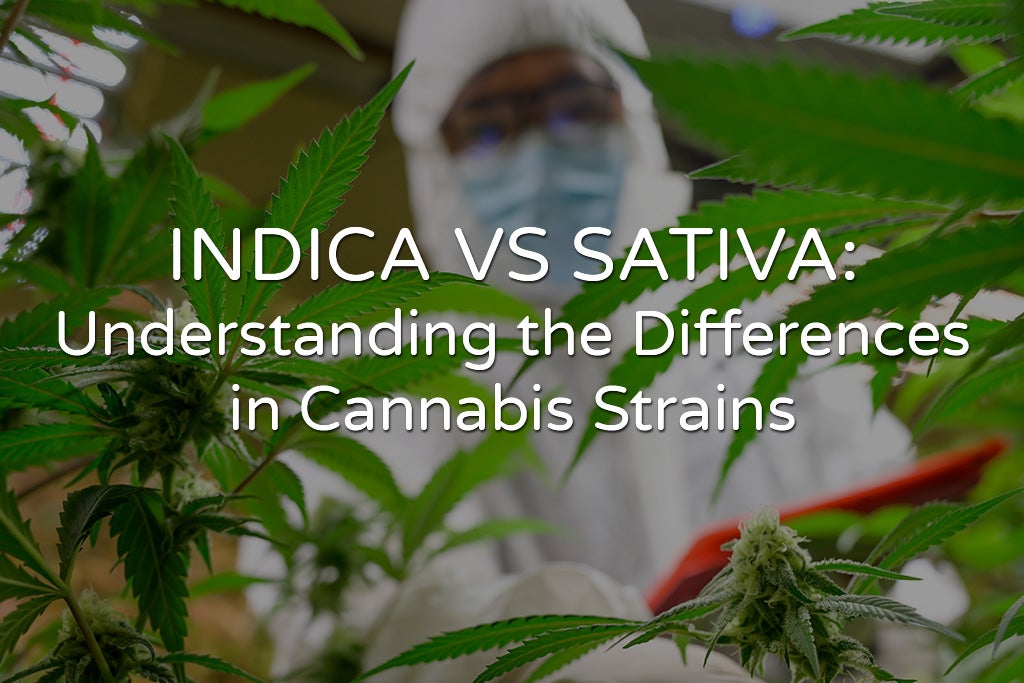- No Products In The Cart
- start shopping
Indica vs Sativa: Understanding the Differences in Cannabis Strains

The cannabis plant is known for its diverse range of effects, which are primarily attributed to its various strains. Understanding the differences between Indica and Sativa strains is crucial for consumers seeking specific effects, whether for recreational or medicinal purposes. This article explores the characteristics, effects, and applications of Indica and sativa strains, highlighting their unique properties and helping users make informed choices.
Origins and Botany
Indica Strains
Indica strains originate from the Hindu Kush mountain range and are characterized by short, bushy plants with broad leaves. They are known for their dense and heavy buds, which often exhibit a rich resin content, making them ideal for producing hashish.
Sativa Strains
Sativa strains, on the other hand, are native to equatorial regions. Sativa plants are tall, with narrow leaves and a less dense bud structure compared to Indicas. Due to their height and long flowering periods, these plants are well-suited for outdoor cultivation.
Effects and Applications
Indica Effects
Indica strains are renowned for their relaxing and sedative effects. They are often recommended for nighttime use due to their ability to induce deep relaxation and promote sleep. Medical users frequently turn to Indica strains for relief from pain, insomnia, and anxiety. The calming properties of Indica strains make them suitable for managing stress and providing a sense of tranquillity.
Sativa Effects
Sativa strains are known for their uplifting and energizing effects. They are typically used during the daytime as they can enhance creativity, focus, and sociability. Sativas are favoured by users seeking an invigorating experience, making them ideal for activities that require mental clarity and physical energy. Medical benefits of Sativa strains include alleviation of depression, fatigue, and attention deficit disorders.
Chemical Composition
The primary cannabinoids found in cannabis are THC (tetrahydrocannabinol) and CBD (cannabidiol). Indica strains generally have higher levels of CBD relative to THC, which contributes to their relaxing effects. Sativa strains tend to have higher THC levels, which are associated with their stimulating properties.
Terpene Profiles
Terpenes are aromatic compounds that contribute to the flavour and aroma of cannabis, as well as its effects. Indica strains often contain higher levels of myrcene, a terpene known for its sedative effects. Sativa strains typically have higher concentrations of terpenes like limonene and pinene, which are associated with elevated mood and mental clarity.
Indica vs Sativa Edibles
When it comes to edibles, the distinction between Indica and Sativa strains remains significant. Indica vs Sativa edibles can offer different experiences based on the strain used in their production. Indica edibles tend to provide a body-centred, calming effect that can aid in relaxation and sleep. Sativa edibles, in contrast, often produce a cerebral, energetic high that can enhance creativity and productivity.
Choosing the Right Edible
Consumers choosing Indica vs. Sativa edibles should consider the desired effects. Indica edibles are the preferred choice for relaxation and sleep, while Sativa edibles are more suitable for an uplifting and motivating experience. Understanding the strain used in the edible product can help users tailor their consumption to their specific needs.
Cultivation and Growth Characteristics
Growing Indica Strains
Due to their shorter flowering times and robust structure, Indica strains are generally easier to grow than Sativa strains. They thrive in cooler climates and are well-suited for indoor cultivation. The compact size of Indica plants makes them ideal for growers with limited space. These plants also tend to produce higher yields of resinous buds.
Growing Sativa Strains
Due to their longer flowering periods and taller growth, sativa strains require more attention and care. They are best suited for outdoor cultivation, where they can reach their full potential. Sativas thrive in warmer climates and need ample space to grow. Despite being more challenging to cultivate, the unique effects of sativa strains make them a valuable addition to any grower’s repertoire.
Best Sativa Strains
Some of the top Sativa strains include:
Sour Diesel: Known for its pungent aroma and energizing effects, Sour Diesel is a favourite among users seeking a boost in creativity and focus.
Jack Herer: This strain is celebrated for its clear-headed and euphoric effects, making it ideal for daytime use.
Green Crack: Despite its controversial name, Green Crack is renowned for its sharp energy and mental clarity, making it perfect for combating fatigue.
Indica Strains
Popular Indica strains include:
Granddaddy Purple: Famous for its deeply relaxing effects and sweet berry flavour, Granddaddy Purple is a go-to for stress relief and insomnia.
Northern Lights: This classic strain is known for its potent body high and ability to alleviate pain and sleeplessness.
Bubba Kush: Bubba Kush offers a heavy sedative effect, making it perfect for nighttime use and managing anxiety.
Medical Benefits
Indica Strains for Medical Use
Indica strains are commonly used in the medical community for their analgesic and sedative properties. They are effective in treating conditions such as chronic pain, muscle spasms, and insomnia. Indicas strains can also help reduce anxiety and stress, making them suitable for patients with anxiety disorders.
Sativa Strains for Medical Use
Sativa strains are valued for their uplifting and energizing effects, which can be beneficial for patients with depression and fatigue. They are also used to enhance focus and creativity, making them helpful for individuals with attention deficit disorders. The stimulating properties of Sativa strains can provide relief from migraines and chronic pain without the sedative effects of Indicas.
Conclusion
Understanding the differences between Indica and Sativa strains is essential for consumers looking to tailor their cannabis experience to their needs. Indica strains offer relaxing and sedative effects, making them suitable for nighttime use and medical applications involving pain and anxiety relief. Sativa strains provide an uplifting and energizing experience, ideal for daytime use and conditions such as depression and fatigue. Whether choosing between Indica vs Sativa or selecting the best strains for specific effects, knowledge of these differences can enhance the cannabis experience.
FAQs
What’s the difference between indica and sativa?
The main differences between Indica and Sativa strains lie in their effects, appearance, and growth characteristics. Indica strains are known for their relaxing and sedative effects, while Sativa strains are uplifting and energizing. Indica plants are shorter and bushier, whereas Sativa plants are taller and have narrower leaves.
How do Indica vs Sativa edibles differ in their effects?
Indica vs Sativa edibles differ in their effects based on the strain used. Indica edibles tend to provide a body-centred, calming effect suitable for relaxation and sleep. Sativa edibles offer a cerebral, energetic high that can enhance creativity and productivity.
Can Indica strains be used for medical purposes?
Yes, Indica strains are commonly used for medical purposes due to their analgesic and sedative properties. They are effective in treating chronic pain, muscle spasms, insomnia, anxiety, and stress.
